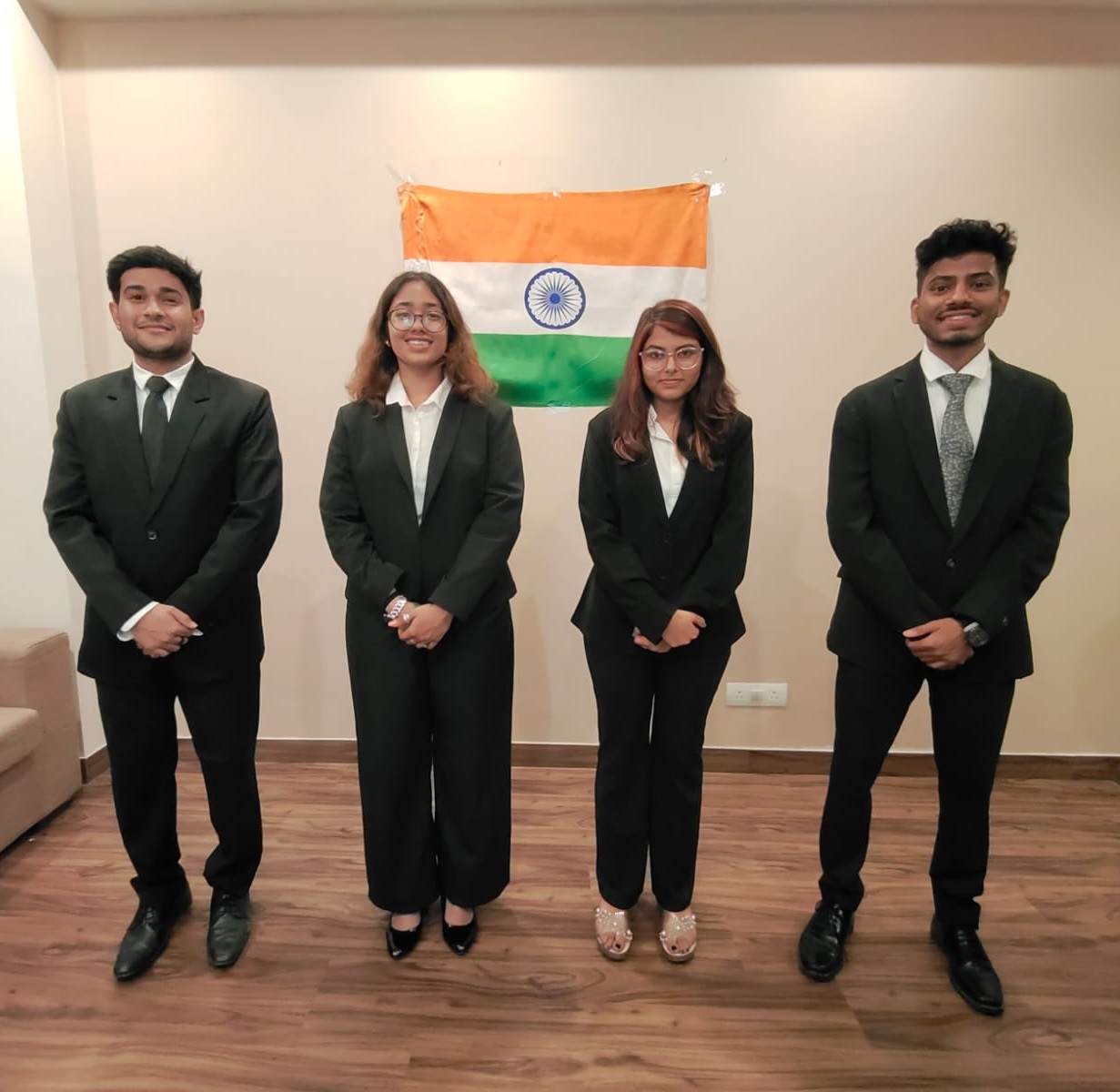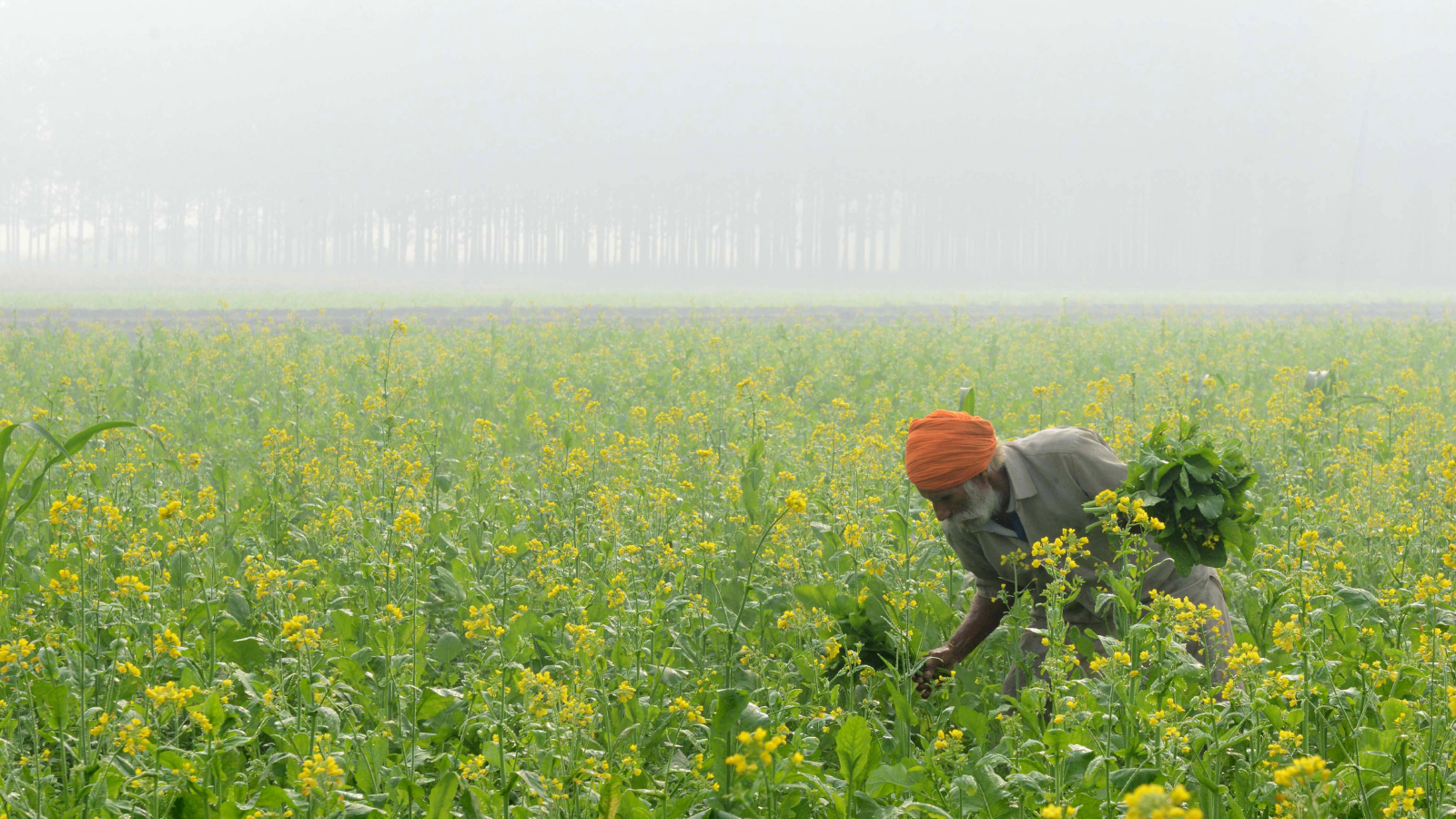As the planet warms, India is facing a tangled set of challenges: The South Asian population hub has some of the most polluted air in the world, especially around the capital of New Delhi. With 1.38 billion people and significant poverty, the country also suffers intense food insecurity, including among schoolchildren. As temperatures rise, crop yields are expected to decrease even more.
That’s why four university students thought the food supply chain held the potential to tackle agricultural air pollution and hunger at the same time. After more than a year of effort, the group arrived at a solution that turns agricultural waste into compostable plateware for schools, embedding seeds in disposable dishes so school gardens can produce more food to fight hunger. The solution made the four Ramjas College commerce students finalists in the 2022 Enactus Race to Feed the Planet Challenge. The Challenge aims to find solutions for food insecurity through plant-based agriculture, products, and enterprises. They were one of four teams—selected from 79 entries from 16 countries—to enter a final round of the competition.
The four-some—Navya Garge, Aradhya Bhalla, Divyam Thapliyal, and Vinayak Tiwari—named themselves Team Waraq, which means “golden leaf” in Arabic. They began studying India’s agricultural issues in early 2021, and what they faced was bracing. According to the Indian Meteorological Department, temperatures in India have already increased by 0.6 degrees Celsius, with heat records broken multiple times over the last decade. And as warming accelerates, crop yields are forecast to decline up to 19% in developing Asian countries like India.

Farmers in places like northern India’s Haryana region typically burn their stalks and stubble at the end of the season, believing the waste will decrease next year’s yields. The burning worsens air quality dramatically. New Delhi, which is near Haryana, ranked in 2021 as the world’s most polluted capital city for the fourth consecutive year. IQAir, which studies pollution annually, also found India to be among the top five most polluted countries. The burning of crop residue combines with vehicle exhaust, commercial pollution, and in-home cooking (with fuels like wood and coal) to degrade air quality further.
The students breathed New Delhi’s significant air pollution themselves, but they knew that trying to re-educate the farmers not to burn crop stubble, or even instituting burn bans would be complicated. So instead, they decided to try a different intervention, incentivizing around 30 farmers to change how they approached their post-harvest waste. The team of students arranged to pick up the waste, and even paid the farmers a few rupees if needed, to persuade them to give it away rather than burn it.
“As humans there is so much we ask people to do, but they fail to do it,” team member Navya Garg says. “They did not have a good alternative.” Her teammate Vinayak Tiwari adds, “And so that is where we step in.”
The students worked on developing a simple formula, using crop stubble, water, and adhesive to produce durable plateware. They also leveraged personal connections to help develop a couple simple compression machines — not unlike tortilla-making machines used elsewhere in the world — that could be shared among the two villages where they piloted the program.
The concept offered an “extremely exciting three-way benefit,” says Jan Weernink, a global marketing director for biosolutions at ADM, a sponsor of the Enactus Race to Feed the Planet Competition. Weernik became the team’s industry mentor in early 2022. Valuing the farmers’ stubble, saving the air pollution that would’ve been produced by burning, and creating a plate out of what would have been waste all represented leaps forward on climate.
Taking it to another level by embedding seeds in the plateware was “ingenious,” Weernink adds. “After these plates have been used, you can till them easily into the soil.” He explains that the fibrous material in the plate serves as a natural nutrient source for the seeds, helping them grow.
In northern India, school gardens are often used not just for teaching or demonstration purposes, but also for substantial food production to help supplement students’ diets. Team Waraq took advantage of that by embedding seeds for nutritious crops like lettuce, tomatoes, and okra. They found that with a yield rate of 15-20% from the plates, embedding four seeds worked well, producing about one plant per plate.
A big question for Weernink and the students has been how long it would take the plates to decompose. Team Waraq began testing that in early 2022, and found they broke down quickly, within 15 to 20 days, although the seeds took additional time to germinate and grow. Different climates and seasons may affect the decomposition and yield rates as well.
Other challenges have included persuading cash-strapped schools to pay more for the compostable flatware. “How do you get a municipality to spend a little extra money?” Weernink asks. He advised marketing the sustainable sourcing, and the direct-value proposition. “If you say the total cost of ownership includes $4,000 worth of fruits and vegetables, you are delivering value to the school, because they get free food.”
A significant remaining challenge is scaling up: So far, Team Waraq has bootstrapped the project with minimal funding. They hope to expand to 100 schools in 50 villages, which they estimate would lift 70,000 people from hunger, while preventing 12 metric tons of carbon emissions.
The team hopes to take the idea further, both in concept and execution. “We always want to better it,” Garg says. She is already looking for ways to improve the plates’ texture, and to get more schools interested in joining the program. “When you have years of planning ahead, you want to keep polishing.”
ADM is a sponsor of Enactus’s Race to Feed the Planet Challenge. ADM is the bridge between the producer on the farm and the consumer-facing brands in our daily lives. Consumers around the world have made it clear that they expect the products they purchase to come from sustainable sources, produced by companies that share their values like we do. Sustainability is one of the biggest challenges our world faces, and it’s one ADM is uniquely positioned to solve. We are scaling up our sustainability efforts to meet the ever-expanding needs of global populations, and to give our customers the edge they need to navigate new consumer demands, shifting attitudes, and environmental challenges.




